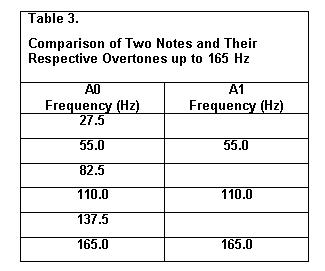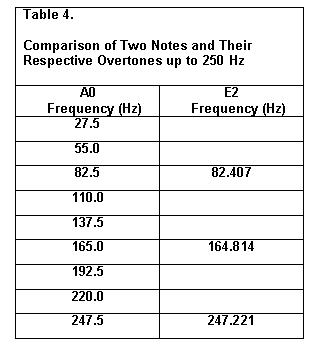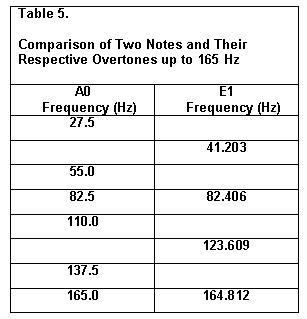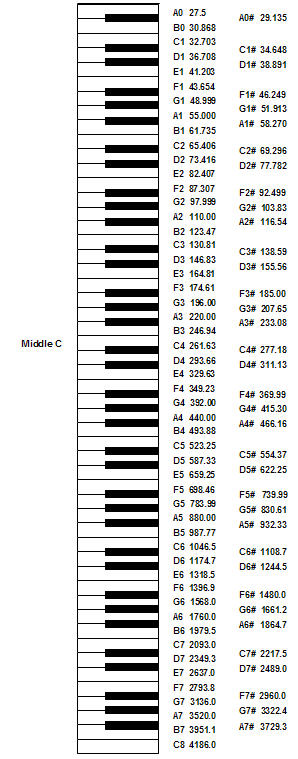AN INTRODUCTION TO MUSIC THEORY
By Tom Irvine
Email:
tomirvine@aol.com
November 24,
2000
________________________________________________________________________
Historical Background
Pythagoras of Samos was a Greek philosopher and
mathematician, who lived from approximately 560 to 480 BC.
Pythagoras and his followers believed that all relations could be
reduced to numerical relations. This conclusion stemmed from
observations in music, mathematics, and astronomy.
Pythagoras studied the sound produced by
vibrating strings. He subjected two strings to equal tension. He
then divided one string exactly in half. When he plucked each
string, he discovered that the shorter string produced a pitch which
was one octave higher than the longer string. A one-octave
separation occurs when the higher frequency is twice the lower
frequency.
German scientist Hermann Helmholtz (1821-1894)
made further contributions to music theory. Helmholtz wrote "On the
Sensations of Tone" to establish the scientific basis of musical
theory.
Natural Frequencies of
Strings
A note played on a string has a fundamental
frequency, which is its lowest natural frequency. The note also has
overtones at consecutive integer multiples of its fundamental
frequency. Plucking a string thus excites a number of
tones.
Ratios
The theories of Pythagoras and Helmholtz depend
on the frequency ratios shown in Table 1.
Table 1. Standard Frequency
Ratios
Ratio |
Name |
1:1 |
Unison |
1:2 |
Octave |
1:3 |
Twelfth |
2:3 |
Fifth |
3:4 |
Fourth |
4:5 |
Major
Third |
3:5 |
Major
Sixth | |
These ratios apply both to a fundamental
frequency and its overtones, as well as to relationship between
separate keys.
Consonance
Now consider two strings which are plucked
simultaneously. The degree of harmony depends on how the respective
fundamental frequencies and overtones blend together.
Music notes which blend together in a pleasing
manner are called consonances. Notes with a displeasing blend are
dissonances.
Helmholtz gave a more mathematical definition
of these terms:
When two musical tones are sounded at the same
time, their united sound is generally disturbed by the beats of the
upper partials, so that a greater or less part of the whole mass of
sound is broken up into pulses of tone, and the joint effect is
rough. This relation is called Dissonance. But there are certain
determinant ratios between pitch numbers, for which this rule
suffers an exception, and either no beats at all are formed, or at
least only such as have so little intensity that they produce no
unpleasant disturbances of the united sound. These exceptional cases
are called Consonances.
Helmholtz has defined degrees of consonance as
shown in Table 2.
Table 2. Consonances
Degree |
Interval |
Absolute |
Octave, Twelfth, Double
Octave |
Perfect |
Fifth,
Fourth |
Medial |
major Sixth, major
Third |
Imperfect |
minor Sixth, minor
Third | |
For reference, a glossary of musical terms is
given in Appendix A.
Octave
Again, a one-octave separation occurs when the
higher frequency is twice the lower frequency. The octave ratio is
thus 2:1
A note's first overtone is one octave higher
than its fundamental frequency.
Consider a modern piano keyboard. The beginning
key on the left end is an A0 note with a fundamental frequency of
27.5 Hz. A piano key has harmonic overtones at integer multiples of
its fundamental frequency. Thus, the A0 key also produces a tone at
55.0 Hz, which is one octave higher than the fundamental frequency.
The second overtone is at 82.5 Hz.
The twelfth key to the right of A0 is A1,
counting both the black and white keys. The A1 note has a
fundamental frequency of 55.0 Hz. The A1 note is thus one octave
higher than the A0 note, in terms of their respective fundamental
frequencies. In fact, there is a one-octave separation between any
two piano keys which are twelve keys apart.
A pleasing, harmonious sound is produced when
two notes separated by one octave are played simultaneously on a
piano or other musical instrument. Helmholtz calls such a pair an
absolute consonance. Thus, the A0 and A1 keys are an absolute
consonance.
This effect is shown for the A0 note and the A1
note in Table 3.

The overtones of the A1 note thus coincide with
the evenly numbered overtones of the A0 note. Again, these two notes
are separated by one octave.
Hermann Helmholz wrote:
A note accompanied by its Octave consequently
becomes brighter in quality, because the higher upper partial tones
on which brightness of quality depends, are partially reinforced by
the additional Octave.
Twelfth
A twelfth is two notes which form a frequency
ratio of 1:3.
A note's second overtone is a twelfth higher
than its fundamental frequency.
Recall the A0 note with its fundamental
frequency of 27.5 Hz. Its second overtone is 82.5 Hz, which is three
times higher than its fundamental frequency.
Ideally, there would be a key with a
fundamental frequency of 82.5 Hz. The nearest is the E2 key which
has a fundamental frequency of 82.407 Hz. This frequency
approximately meets the goal. Thus, the E2 key is considered as a
twelfth higher than A0. A comparison is shown in Table
4.

Thus A0 and E2 have three tones very nearly in
common in the frequency domain up to 250 Hz.
Fifth
A fifth is two notes which form a frequency
ratio of 2:3.
A note's second overtone is a fifth higher than
its first overtone .
Recall the A0 note with its fundamental
frequency of 27.5 Hz. A fifth higher would be 41.25 Hz. Such a note
does not exist in an exact sense. On the other hand, the E1 note has
a frequency of 41.203 Hz, which is approximately equal to the exact
fifth. Thus, E1 is considered as a fifth higher than A0. A
comparison is shown in Table 5.

Thus, A0 and E1 have two overtones very nearly
in common in the frequency domain up to 165 Hz.
Reference
APPENDIX A
Glossary
Consonance - a simultaneous combination of
sounds conventionally regarded as pleasing.
Dissonance - a simultaneous combination of
sounds conventionally regarded as lacking harmony.
Harmony - a combination of musical considered
to be pleasing.
Harmonic - a tone in the harmonic series of
overtones produced by a fundamental tone.
Harmonic Series - a series of tones consisting
of a fundamental tone and the overtones produced by it, whose
frequencies are at integral multiples of the fundamental
frequency.
Interval - the difference in pitch between two
musical tones
Octave - the interval of eight diatonic degrees
between two tones, one of which has twice the frequency as the
other.
Overtone - a harmonic.
Partial - a harmonic.
Pitch - the frequency of a tone.
Reference: American Heritage Dictionary,
Houghton Mifflin Company, Boston,
1982. |



